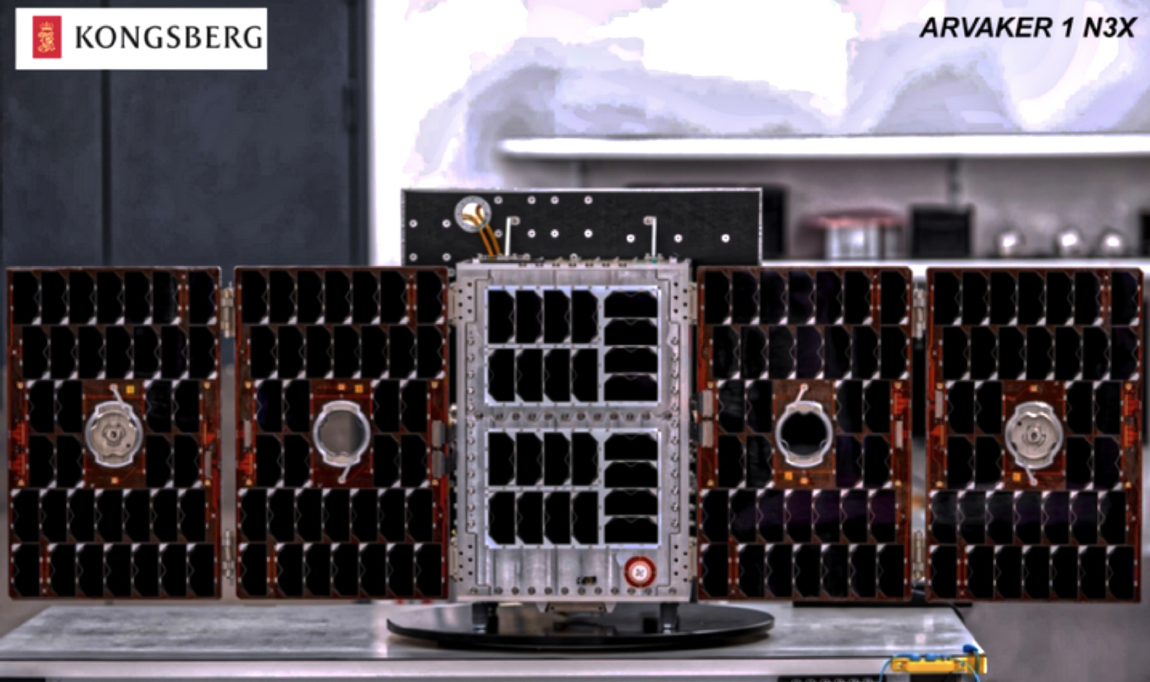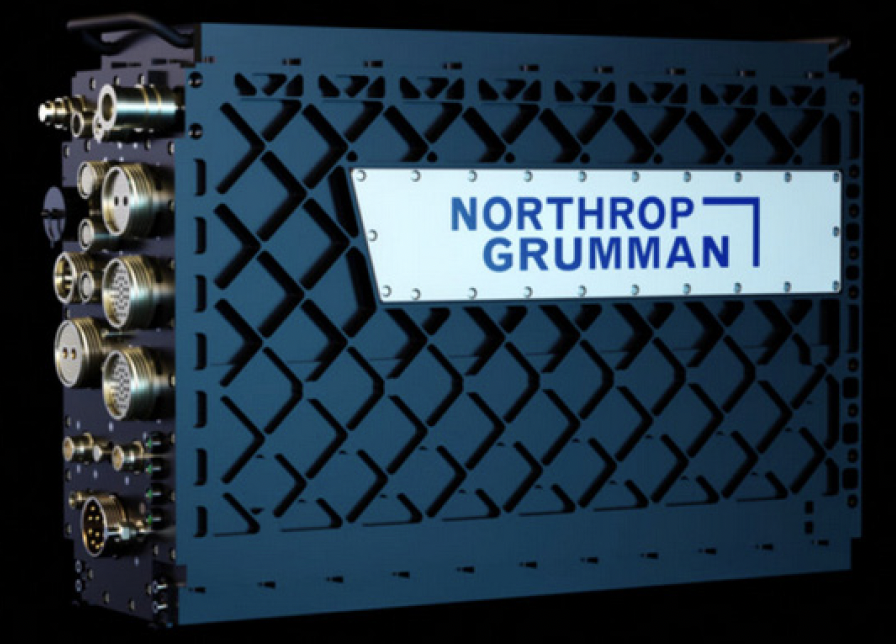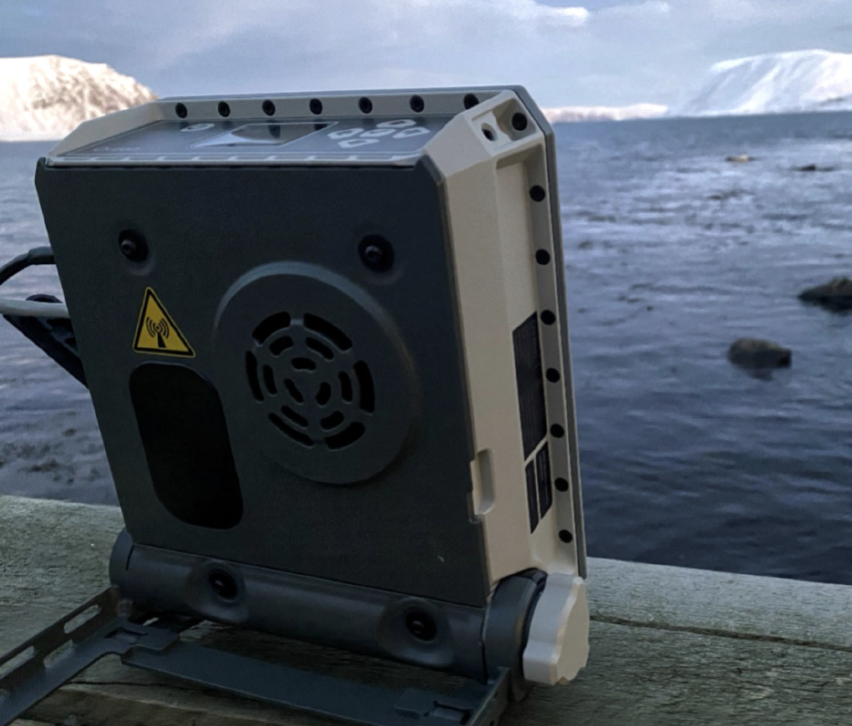KONGSBERG defence & Aerospace launches and is now operating their 1st satellite
Kongsberg Defence & Aerospace (KONGSBERG’) has entered the space industry as a satellite operator and service provider after the company launched their first microsatellite from California. The satellite, named ARVAKER 1 N3X, was launched from the Vandenberg Space Force Base in California as part of the SpaceX Transporter 13 launch service.

In 2024, KONGSBERG was awarded a contract from the Norwegian Armed Forces on behalf of the Norwegian government to provide maritime surveillance data to cover Norwegian Areas of Interest. As part of the five-year contract, KONGSBERG will launch three satellites.
The data will be used by the Norwegian Armed Forces, as well as other Norwegian government institutions involved in maritime security such as the Coastal Administration, the Directorate of Fisheries, and the Norwegian Customs.
The MP42H satellites are produced by Kongsberg NanoAvionics and equipped with Automatic Identification System (AIS) receivers and detector systems, delivered by Kongsberg Discovery. It includes a navigation radar detector developed by the Norwegian Defence Research Establishment (FFI). Kongsberg NanoAvionics has manufactured and launched 40 satellites to date.
The satellites are operated by Kongsberg Satellite Services (KSAT), which will use their international network of downloading stations to provide high frequency and low latency surveillance data for both the Norwegian Government as well as international customers.
“KONGSBERG has been active in the space segment for decades, delivering high-end technology and solutions, but this successful launch marks a milestone for us as we will own and operate the satellites for the first time,” said Eirik Lie, President of Kongsberg Defence & Aerospace.
U.S. Air Force to evaluate Northrop Grumman’s InSight™ in support of the DAF Battle Network
Northrop Grumman Corporation (NYSE: NOC) was awarded a follow-on contract to help the U.S. Air Force connect airborne platforms with faster, secure communications solutions.

Northrop Grumman will deliver NG InSight™, a software- programmable, open systems compliant processor designed to keep warfighters connected and adaptable in rapidly changing mission environments.
Under this contract, the U.S. Air Force will continue to test and evaluate NG InSight™ capabilities for potentially supporting the future of the DAF Battle Network, the Department of the Air Force’s contribution to the Department of Defense’s Combined Joint All-Domain Command and Control initiative. As a part of the contract award, Northrop Grumman will:
-
Demonstrate how the NG InSight™ open architecture processor allows the integration of third-party technologies, ensuring future growth, sustainability and adaptability.
-
Provide engineering support to connect the system to existing U.S. Air Force communications networks, ensuring feasibility, functionality and compatibility to enable timely data-sharing across domains.
Northrop Grumman was previously awarded a Software Programmable Open Systems Compliant (SPOC) contract and demonstrated the capability in a flight test, which connected with a ground station in a live, over-the-air test using advanced waveforms.
This new award marks the next step in delivering an ecosystem that integrates advanced networking and communications, cybersecurity and reconfigurability to enable a connected battlespace.
NG InSight™ offers a range of innovative, scalable and adaptable connectivity and processing solutions tailored to meet any mission environment’s demands. Learn more about the NG InSight™ ecosystem at this direct infolink.
U.S. Space Forces - Korea stands up 1st forward operating CJSpOC in support of FS 2025

A combined assault force of U.S. and Republic of Korea (ROK) special operations personnel conduct a direct action raid on a time sensitive target in an underground facility during a multi-day training event associated with exercise Freedom Shield 25 at a training site located east of Seoul earlier this month. The training event served as a capstone to two-weeks of various training that maintained the combined readiness and lethality of U.S. and ROK special operators. The routine training enables a peaceful and stable Indo- Pacific region through a strong deterrent force. (U.S. Army photo by Sgt. Taylor Zacherl)
U.S. Space Forces - Korea established its first forward operating Combined Joint Space Operations Center (CJSpOC) earlier this month, supporting exercise Freedom Shield 2025 and phase two of POLARIS HAMMER - KOREA.
Within the exercise environment, the CJSpOC facilitated the operational command and control of combined space forces in the Korean theater to achieve the combined forces commander’s objectives. It operated around-the-clock, enabling SPACEFOR-KOR, along with Space Operators from the Republic of Korea and additional partner nations, to continuously coordinate, plan, integrate, synchronize and execute space operations, providing tailored space effects on demand.
This milestone marks the first time a CJSpOC has been rapidly stood up with forces deployed directly to support a combined exercise, enhancing real-time space domain awareness and operational support, and it was accomplished through a mix of commercial and defense technology, demonstrating how the commercial space sector’s innovative capabilities provide pathways to enhance the resilience of Department of Defense space capabilities and strengthen deterrence.
Ovzon’s “High North Expedition” validates ability to meet NATO’s Arctic requirements
Ovzon recently completed an overland expedition to the High North, successfully validating the performance, mobility, and resiliency of the Ovzon 3 satellite and the Ovzon T6 and Ovzon T7 mobile satellite terminals in demanding conditions more than 480km (300 miles) inside the Arctic Circle.

Ovzon demonstrated the ability of the Ovzon 3 satellite’s On-Board- Processor to provide very low-latency, direct remote control of unmanned platforms 145 km inside the Arctic Circle. The High North Expedition was an attempt to push the envelope and test Ovzon’s integrated satellite communication system all the way to the cliffs above the Barents Sea.
The Ovzon team was joined by representatives of four NATO countries with an interest in the High North to observe and conduct independent testing of the performance of the Ovzon 3 satellite.
The multi-day expedition entailed stops at each degree of latitude to collect test data for Ovzon’s mobile satellite terminals, the Ovzon T6 and the Ovzon T7. Testing was also conducted on the unique features that the Ovzon On-Board-Processor offers, included in the Ovzon Orion SATCOM-as-a-service.


